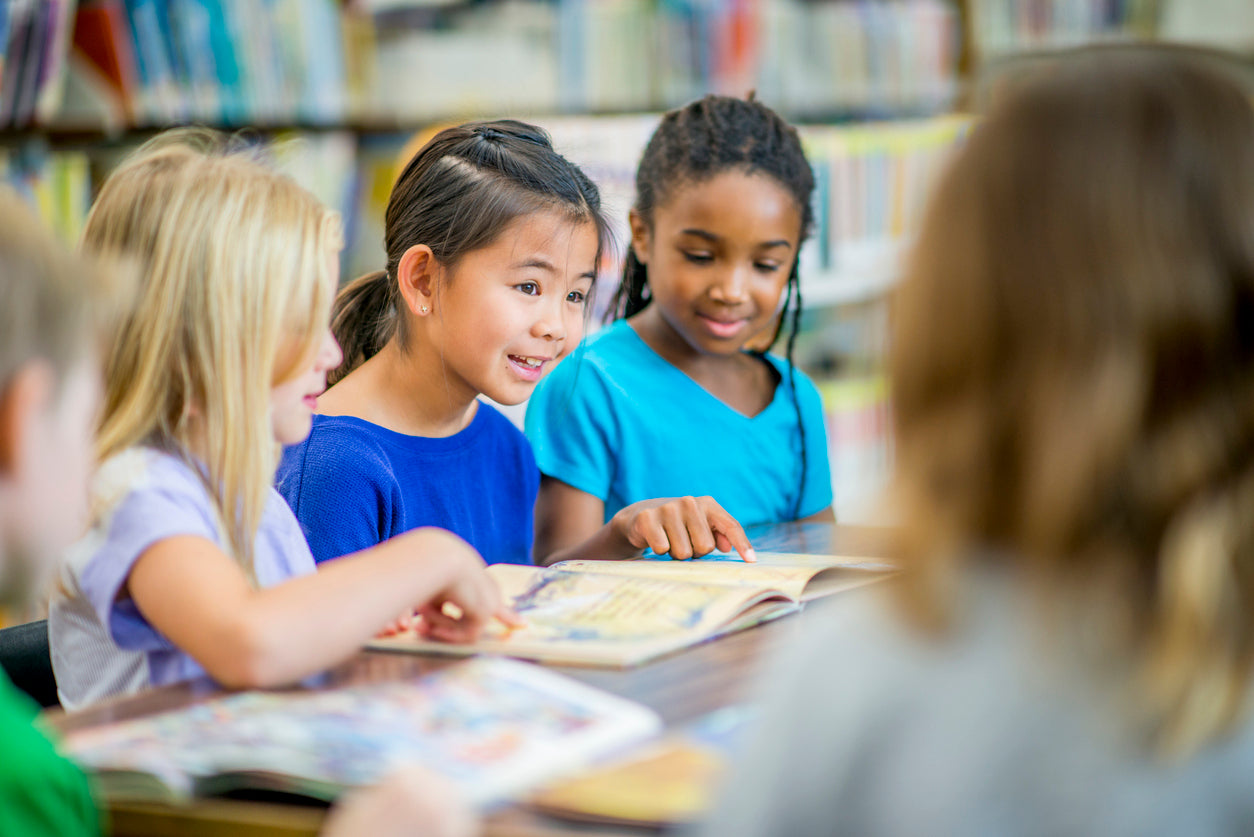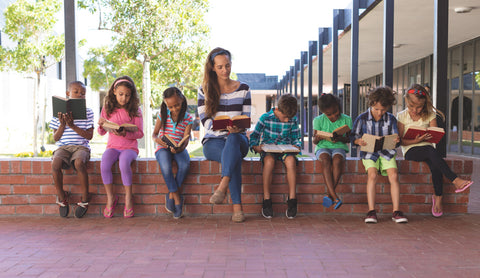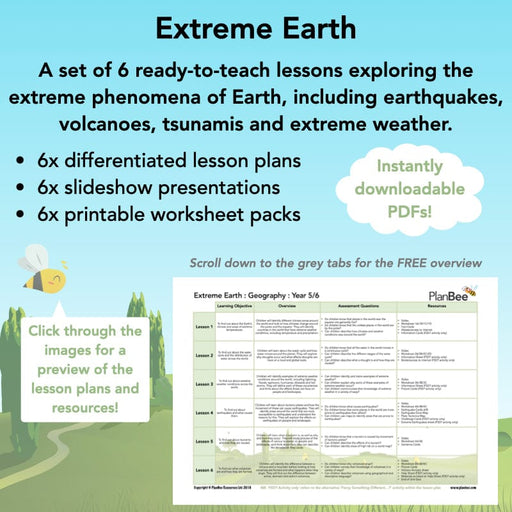
Easy book corner ideas
One of the most frequently asked questions in schools at the moment is how can we boost pupils attainment levels. So how can teachers and schools help all their pupils achieve their best, with limited time and budget?
It can be tempting to look at quick fixes like spending money on classroom decorations, but the novelty of these additions wears off fast and the money spent on them soon adds up. One way to boost attainment across all areas of learning is to get children reading more. In fact, this document published by the DFE states:
Here at the PlanBee office we have reflected on what worked and what didn’t work so well in our own classrooms. So here are our tried and tested top suggestions for developing reading for pleasure and decorating your book corner:
1. Recommended reading suggestions
Think along the lines of the ‘you bought this so you might like this…’ suggestions seen on most online retailers. If a book or series has captured your class, use this information to help your children find another book they might like.
There are loads of great ways these suggestions can be displayed. From eye-catching displays to working walls where the children can take ownership and add their own recommendations.
You can view more examples on our Primary English Ideas Pinterest Board.
2. Guess the book
Create a buzz about descriptive writing by displaying extracts from books. Challenge the children to name the book and explain the clues they used to find the answer. These types of challenges show the children examples of published work and give them a flavour of different books they might like to read.
3. Guess the character
Display character descriptions and pictures of characters and challenge the children to match them. You can either create your own or download our KS1 Character Cards or our KS2 Roald Dahl Character Cards. These cards can be used to play matching games as individuals or teams.
Once the characters have been matched to their descriptions the children could pick two characters and role play or write a conversation the two of them might have if they met.
4. Book reviews
Ask the children to write reviews about the books they read. You can then display the reviews and the star rating given to a book. Other children are bound to want to contribute to the conversation and share their opinions so this is a fantastic way to get more children reading.
If the children do the book reviews electronically you can keep track of the reviews and ratings easily. Or you can print out and use our Foldable Book Review Template. Give the responsibility to a child in your class each week to share some of their highlights of the reviews and update their peers about the star ratings that have changed.
5. Create an area where topic books are displayed
Books related to a topic or particular area of learning can be displayed in a box, on a shelf or on a table; it doesn’t really matter where they are, so long as they are accessible and will appeal to your class.
The BookTrust has a selection of booklists as do School Reading List. The have done the work for you in collating these books and provide you with a great place to start.
6. Be seen reading

Take time to read when your class are reading. Show them you enjoy books too.
Let the children see you selecting, and reading books, from the book corner. If you’re selecting a book to read to the class at the end of the day let them see you get it, and return it, from the book corner.
Talk to the children about the books you are reading, what you liked about them and the bits you didn’t enjoy. Hold discussions where the children feel listened to and can suggest books to their peers. The more the adults in your classroom are seen to value reading, the more the children will.
7. Remember quality not quantity
Hand-sewn cushions depicting famous books, themed book corners, or mood lighting might make the children say wow when they first walk into the classroom, but this buzz won’t last long if quality books are missing from the area.
A classroom I taught in had hundreds of books in its book corner, comfy cushions and draped material. The children loved going into it, but not to read. When the children wanted to read they would sit on the carpet and select a book from my personal book box. After I took the time to look at the books available in the book corner, I realised the majority were old, damaged and unappealing, and there was too much choice. After removing most of the books from the shelves the children started reading more. Having fewer books of better quality on offer meant the children could select a book and be fairly confident they would enjoy it.
When working with older primary-aged children, remember the importance of having the full set of books of a series your class are interested in. This can be especially important when working with children with neurodiversities, who might struggle to move on to a new series before completing the set.
Teaching is a career in which you can often feel pulled in every direction; you want to do the best by your class, as well as keep up with your school’s policies and initiatives. Teachers often spend their own time and money on things for their classroom and pupils; read our work-life balance blog for tips on working out where to focus your energy.
If you are looking for new books to add to your book corner then read our Combat Harmful Gender Stereotypes blog or our Wordless Picture Books blog.
Featured collection
-
We're Going on a Lion Hunt
Original price £12.00 - Original price £12.00Original price£12.00 - £12.00£12.00 - £12.00Current price £12.00Take your class on an unforgettable adventure through the African savannah with this exciting six-lesson English scheme, inspired by 'We’re Going o...
View full details -
Titanic Recounts and Reports
Original price £12.00 - Original price £12.00Original price£12.00 - £12.00£12.00 - £12.00Current price £12.00This Titanic Recounts and Reports planning pack for KS2 children challenges your Year 5 or Year 6 children to use what they know about the Titanic ...
View full details -
Rainforest Habitats
Original price £10.00 - Original price £10.00Original price£10.00 - £10.00£10.00 - £10.00Current price £10.00Take your class on an unforgettable journey through the world's rainforests with this fully planned and resourced five-lesson 'Rainforest Habitats'...
View full details -
Mountains KS2
Original price £10.00 - Original price £10.00Original price£10.00 - £10.00£10.00 - £10.00Current price £10.00Download this Mountains KS2 lesson pack to teach your class all about mountains! Throughout the course of five ready-to-teach lessons, your class w...
View full details -
Extreme Earth
Original price £12.00 - Original price £12.00Original price£12.00 - £12.00£12.00 - £12.00Current price £12.00Introduce your class to the wilder side of the world with this pack of six Extreme Earth KS2 Geography lessons! Your class will find out all about ...
View full details











Leave a comment